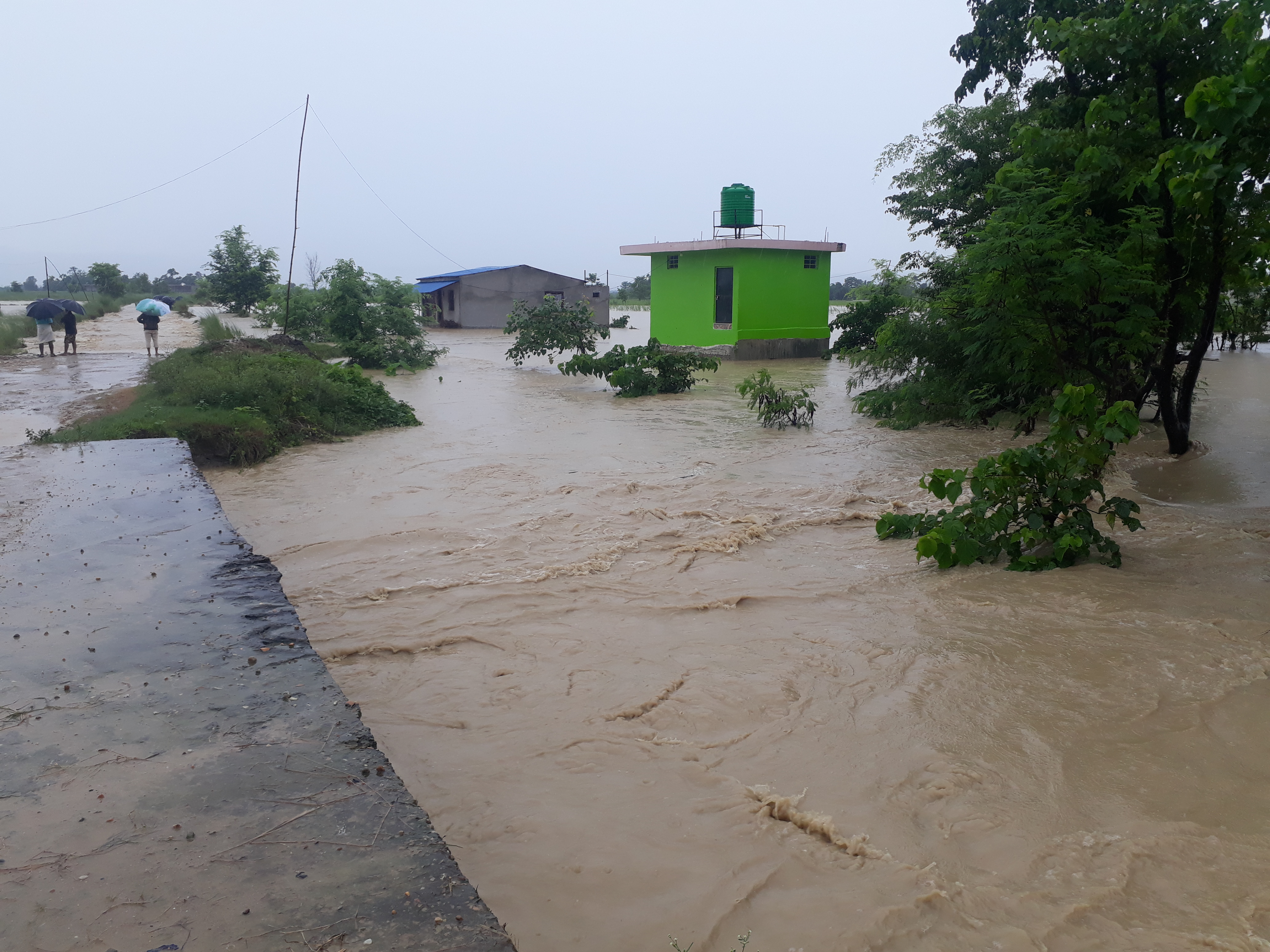Over 88,000 hectares of land inundated
- As per latest reports, the floods and landslides have not affected paddy plantation badly this year
KATHMANDU, JULY 24
The recent incessant rainfall across the country has destroyed millions of property and claimed a number of lives.
The floods and landslides have also affected fertile lands across the country.
According to the Ministry of Agriculture and Livestock Development (MoALD), the floods have damaged around 88,677 hectares of fertile land in five provinces so far, while reports from the remaining two provinces are yet to be compiled. Meanwhile, death of 1,081 livestock has been reported so far, said Hari KC, spokesperson for MoALD.
The data has been collected from Province 2, Gandaki Province, Province 5, Karnali Province and Sudurpaschim Province till date. Of them, Province 2 has been highly affected. As per MoALD, a total of 87,629 hectares of land has been inundated so far in Province 2. Although the daily life of people has been affected by the floods and the lands have also been inundated, agricultural produce are less affected.
“The inundated land in Province 2 soaked up the water quite fast, however, if the rainfall continues the agricultural produces might be in risk,” he said, “Rainfall has proved to be a boon for paddy plantation though.”
Similarly, floods and landslides in Gandaki Province have affected crops cultivated on 1,082 hectares of land. Moreover, 392 livestock have also been killed, including 300 chickens. In Province 5, the landslides have affected paddy and maize cultivated on a total of 156 hectares of land, while 389 livestock have been killed, including 250 chickens.
Paddy planted on 205 ropanis of land in Karnali Province has been damaged by the floods, while in Sudurpaschim Province 300 chickens have been killed. Among other livestock, chicken has been affected the most, said KC.
“As per the information received so far, the floods and landslides have not affected the paddy plantation badly this year but we believe the landslides might affect other agricultural produces cultivated on 700 hectares of land across the country,” he added.
A version of this article appears in e-paper on July 25, 2020, of The Himalayan Times.






